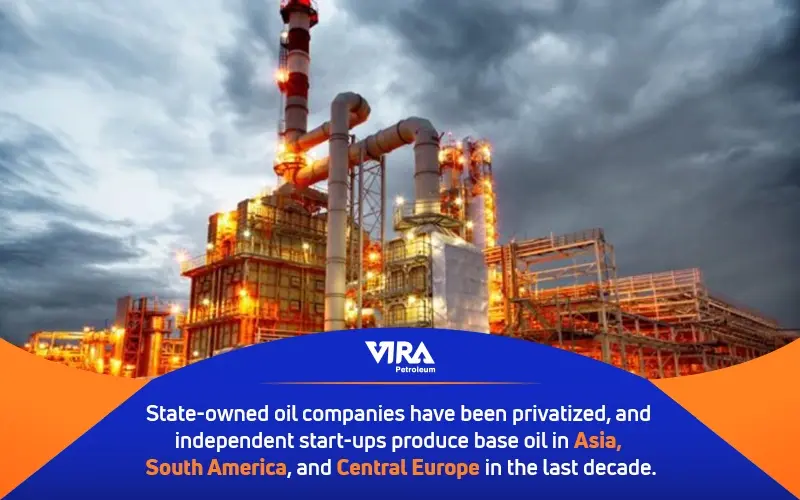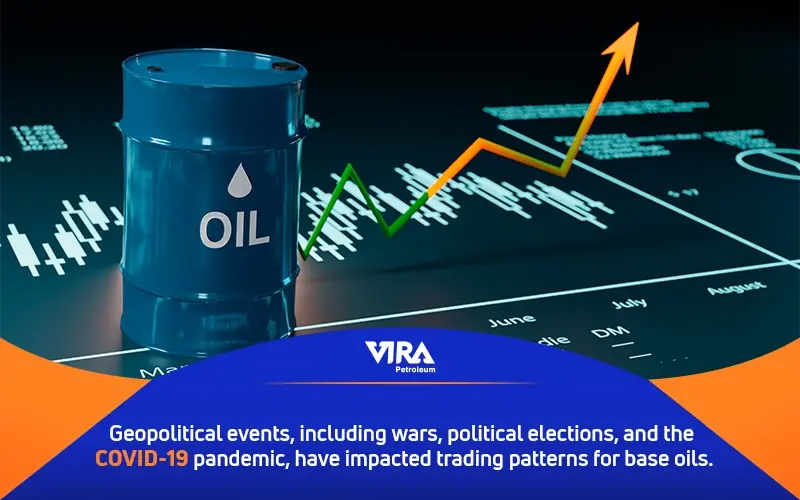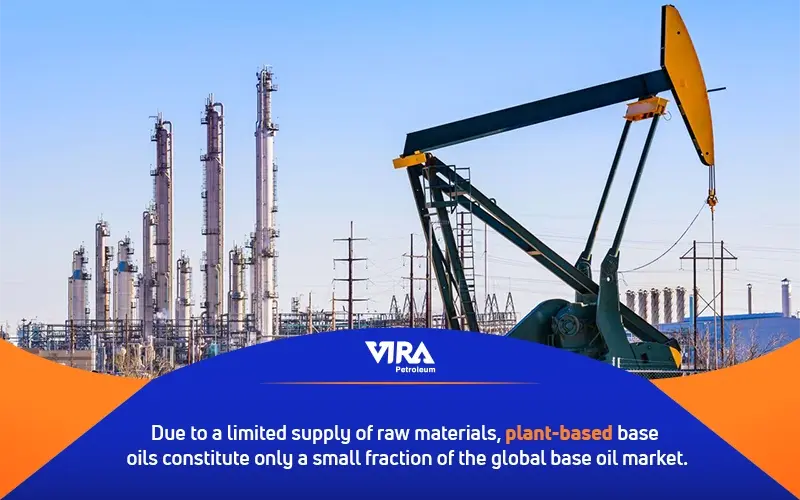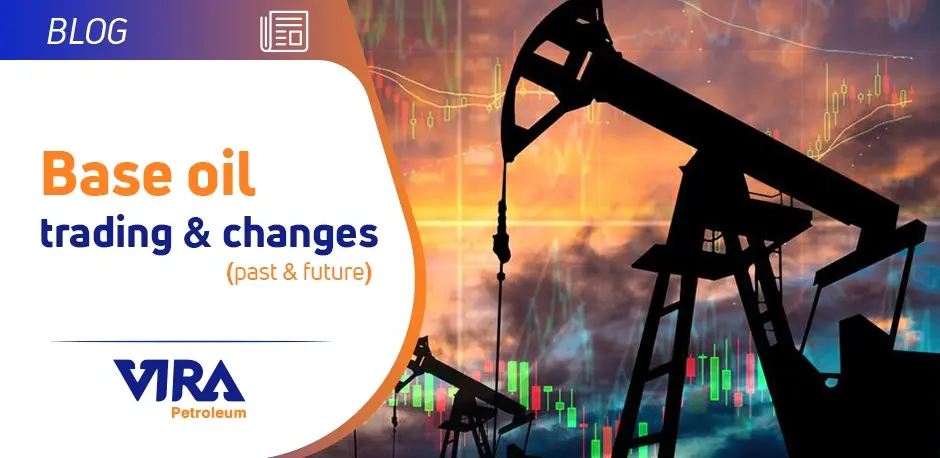Advances in the transportation industry have led to a boom in business worldwide. Many countries that were in areas with limited access, to the development of technology, can have exchanges with different countries. This improvement in world trade, which has connected Asia to America and European countries to the heart of Africa, has also had an impact on the petrochemical industry and base oil trade.
due to these changes and increasing progress in various industries, the process of production and trade of base oil has also changed in the past decades.
Base oil is produced in different countries and sent to different regions. Due to the progress and increase in demand at the global level, the production capacity of base oil has also increased greatly since the 1990s. According to David Whitby, chief executive of United Kingdom-based Pathmaster Marketing Ltd :
since 1993, the number of base oil factories has decreased from 166 to 147, while the total production capacity of these factories has gone from 47.3 million metric tons per year to 60.26. million metric tons per year has increased.
This is due to the closure of several smaller, older, and/or less economically efficient plants while the construction of numerous much larger new plants. The largest changes in plant populations have been seen in Western Europe (down from 29 to 17), North America (down from 32 to 18), Asia (up from 37 to 61), and the Middle East (down from 29 to 17). (up from 7 to 15).

Increase of private base oil factories
In the last decade, many state-owned oil companies have been privatized, and many start-up companies also produce base oil independently and non-governmentally. These changes have occurred mostly in Asia, South America and Central Europe. But in some Asian countries such as China and Russia, the new factories are state-owned and produce base oil with high capacities.
Chinese base oil producers’ annual production capacity rose from 4.27 million tons in 2005 to 7.41 million tons in 2022. base oils, whereas BP and Total left the industry. Independent base oil producers’ annual production capacity increased from 14.21 million metric tons in 1993 to 35.59 million metric tons in 2022.
Due to the significance of base oils in the production and distribution of finished lubricants, Shell, ExxonMobil, and Total continue to produce them.

Changes in baase oil trading patterns
Base oil trading patterns have changed a lot in recent years. In the 1990s, Western Europe was the main exporter of base oil to many regions, but now, due to the availability of transportation options, base oil suppliers in many parts of the world can buy and sell base oil. to pay As a result, the base oil is available in many parts of the world and buyers can get base oil from their region or other regions.
Also, Except for the export of base oils from Russia, there is little chance that the existing patterns of base oil trading will alter significantly over the coming years. Large-scale trading in base oils will probably continue, both within and across areas. This is due to the fact that each of the significant types of base oils has well-understood qualities and functions, making it desirable for purchasers to have a flexible and stable supply chain to have a number of prospective suppliers.
Trading patterns are often affected by geopolitical events such as wars and elections of political leaders, and events such as the COVID-19 pandemic or Russia’s invasion of Ukraine have affected these patterns for base oils.
Russia is now unable to export base oils to the sanctioned nations as a result of Russia’s invasion of Ukraine and the sanctions imposed by Western Europe, the United States, Japan, Australia, and Canada. In the past, Russia exported to Western and Central Europe over one million metric tons of base oils annually.
Russia is currently looking for substitute markets in Asia, Africa, and South America, but will now have to pay considerably more for shipping. In order to compete with more local suppliers in and to these regions, it will have to give up a sizable portion of its base oil pricing. If not permanently, this might go on for a while.
Future patterns of trade in base oil could be affected by other geopolitical occurrences.
Main Base Oil Exporting Countries, 2022
| Region | country | Main Base Oil Groups |
|---|---|---|
| Western Europe | France | II |
| Germany | I | |
| Italy | I | |
| Netherlands | III | |
| Spain | I, III | |
| Sweden | V | |
| Central & Eastern Europe | Russia | I, II, III |
| North America | Canada | II, III |
| United States | I, II, II+, V | |
| Middle East | Bahrain | III |
| Qatar | III | |
| Saudi Arabia | I, II | |
| Asia | Singapore | I, II |
| South Korea | II, III | |
| Malaysia | II, III |
Main Base Oil Importing Countries, 2022
| Region | country | Main Base Oil Groups |
|---|---|---|
| Western Europe | Belgium | II, III |
| Germany | II, III | |
| Netherlands | III | |
| UK | II, III | |
| Central & Eastern Europe | All countries | I, II, III |
| North America | Canada | II, III |
| United States | III | |
| South America | All countries | I, II, III |
| Asia | China | III |
| India | I, II, III | |
| Singapore | III | |
| Other countries | I, II, III | |
| Africa | All countries | I, II, III |
| Oceania | All countries | I, II, III |

biobased base stocks
Because there are not enough sources of raw materials, base oils made from plant materials make up a small percentage of the worldwide base oil market. Biobased products must compete with food for raw materials unless they are produced from leftover agricultural commodities. The use of waste agricultural products as feedstocks for biobased lubricants is receiving more attention, but a growing global human population is anticipated to put additional strain on the food supply and the land needed to cultivate it.
The use and popularity of base oils in different regions of the world
No one kind of base oil is exchanged more frequently than the others. While group III base oils are exported from the Middle East and South Korea, Group I base oils are still exported from Western Europe. Exports of Group II base oils come from the US, Canada, Singapore, and South Korea. South and Central America, as well as Africa, import a sizable amount of base oils. Every area trades different kinds of base oils.
All across the world, the usage of synthetic base oils such polyalphaolefins, esters, and polyethylene glycols is rising. In the 1990s, Western Europe led the way in this market trend for automobile lubricants. Around 20 years ago, North America, Japan, and Australia started to follow. The Middle East, Central and Eastern Europe, Asia, and Central and South America have all started to catch up. In Africa, the use of synthetic base oils has just lately begun. More lubricants based on Group III base oils have been marketed as having “synthetic performance” in recent years.
Furthermore, Western Europe, North America, and Singapore are the primary exporters of lubricant additives to the rest of the globe since these regions are home to the majority of the world’s lubricant additive producers.

